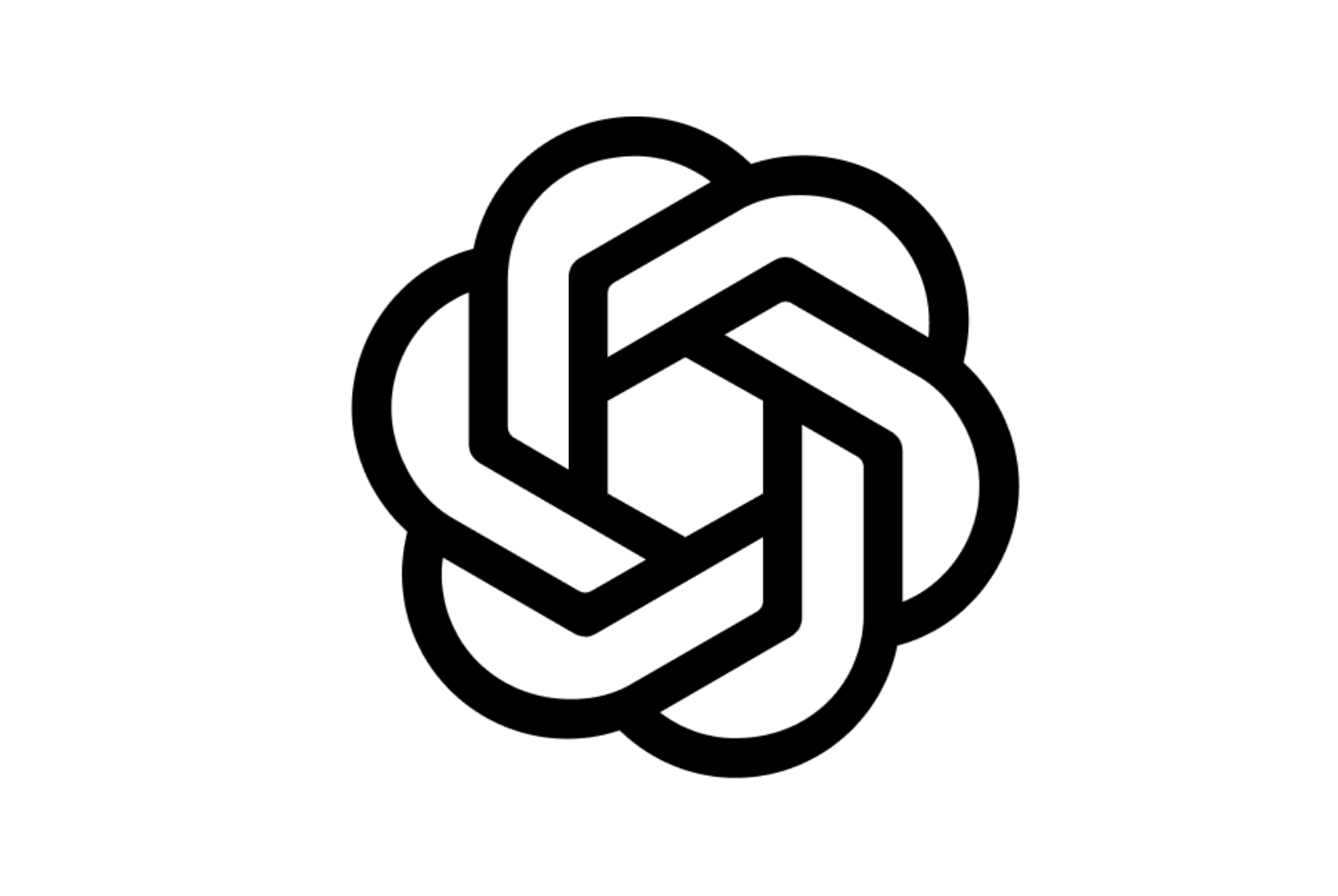
Whether you're building voice assistants, dynamic UIs, or smart multi-input applications, GPT-4o is the new gold standard in real-time AI performance.
- AI Product Builders: Design next-gen apps that blend text, speech, and vision inputs.
- Voice Assistant Developers: Create natural, zero-lag conversational bots with real-time feedback.
- Customer Experience Teams: Power intelligent, voice-enabled support agents across platforms.
- Accessibility Innovators: Build tools that translate, transcribe, and assist across sensory inputs.
- EdTech Platforms: Deliver real-time interactive tutoring with voice, text, and visual inputs.
- Creative Tools & Multimedia Apps: Use voice + vision + text for dynamic, multimodal content creation.
🛠️ How to Use GPT-4o Realtime Preview?
- Step 1: Enable GPT-4o in OpenAI API: Head to the OpenAI platform and select gpt-4o as your model.
- Step 2: Choose Your Modality: GPT-4o supports text, image, and audio inputs. Decide what kind of input/output your use case needs.
- Step 3: Make a Multimodal API Call: Send structured input via the chat completion or vision/audio endpoint to engage real-time features.
- Step 4: Optimize for Speed: GPT-4o Realtime Preview is engineered for low latency—ideal for streaming responses and real-time feedback loops.
- Step 5: Integrate & Deploy: Hook it into your app, bot, assistant, or tool using standard OpenAI API methods.
- Multimodal Brilliance: Accepts and responds to text, images, and audio—all in one conversation.
- Human-Like Speed: Delivers responses as fast as 232 milliseconds—on par with human reflexes.
- Natural Voice Output: Outputs speech with emotion, intonation, and natural cadence.
- State-of-the-Art Intelligence: Matches GPT-4 Turbo in reasoning, coding, and writing performance.
- Streamlined API: All-in-one model for voice, vision, and text—no model switching needed.
- Multilingual Capabilities: Real-time translation and interaction in multiple global languages.
- Blazing Real-Time Speed: Faster than any GPT model before—ideal for voice and chat apps.
- Unified Multimodal AI: Handles diverse input types in one model without breaking a sweat.
- Expressive Voice Output: AI that doesn't sound robotic? Yes, finally.
- Multilingual & Adaptive: Handles translation, accents, and diverse languages with ease.
- Single Model Simplicity: No juggling multiple models for different inputs. One API, many modes.
- Still in Preview: Feature availability and access can change or be limited.
- Requires Careful Prompt Design: For voice/vision tasks, structure matters more than ever.
- API Evolving Rapidly: Documentation and behavior may shift frequently.
- Not All Tools Supported Yet: Some GPT-4 Turbo tools may be missing or under development.
- Enterprise Integration Needs Planning: Real-time responsiveness needs proper infra setup.
Text Tokens
$5/$20 for 1M tokens
Cached Input: $2.50
Output: $20.00
Audio Tokens
$40/$80 for 1M tokens
Cached Input: $2.50
Output: $80.00
Proud of the love you're getting? Show off your AI Toolbook reviews—then invite more fans to share the love and build your credibility.
Add an AI Toolbook badge to your site—an easy way to drive followers, showcase updates, and collect reviews. It's like a mini 24/7 billboard for your AI.
Reviews
Rating Distribution
Average score
Popular Mention
FAQs
Similar AI Tools
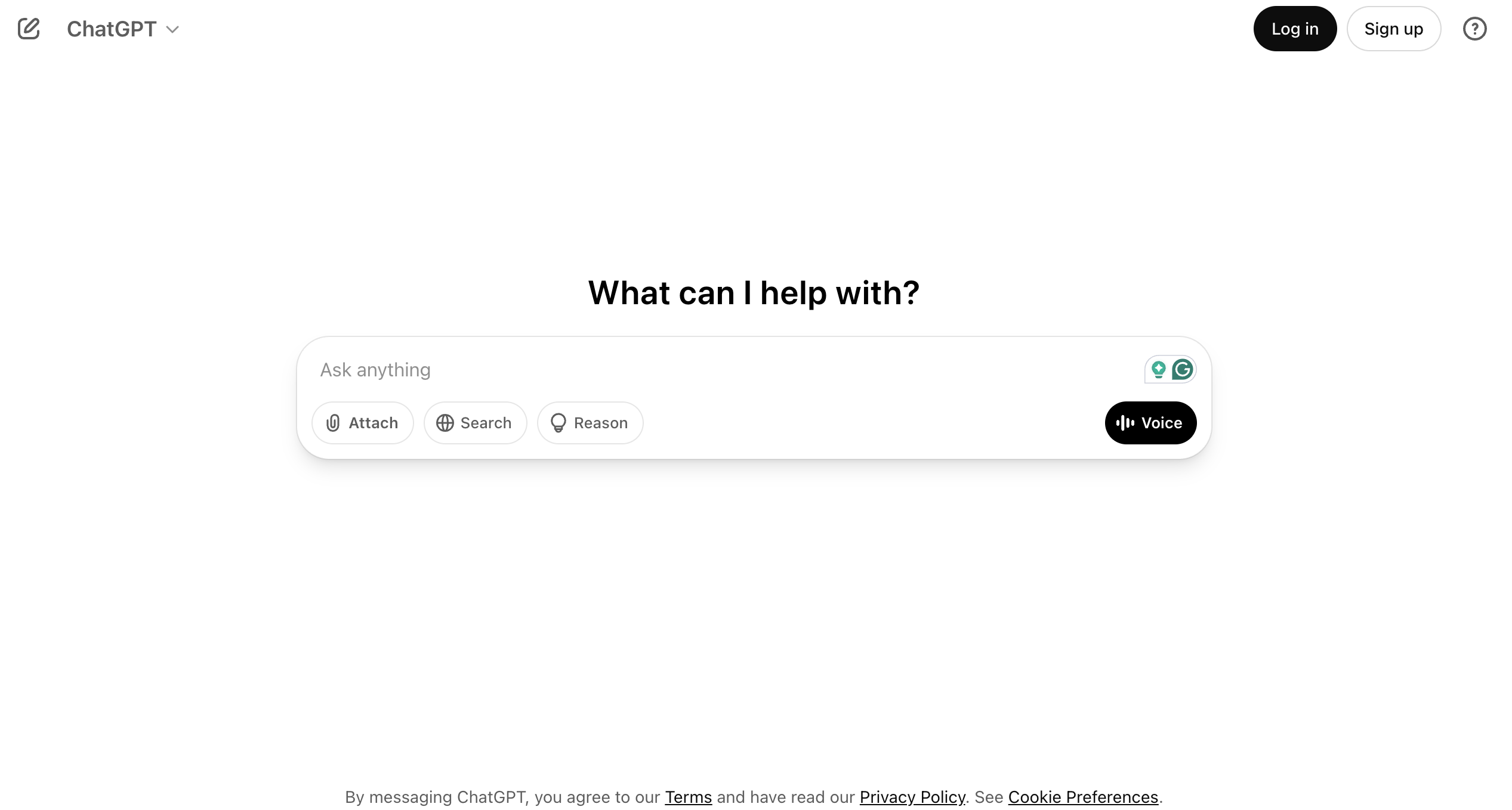

OpenAI ChatGPT
ChatGPT is an advanced AI chatbot developed by OpenAI that can generate human-like text, answer questions, assist with creative writing, and engage in natural conversations. Powered by OpenAI’s GPT models, it is widely used for customer support, content creation, tutoring, and even casual chat. ChatGPT is available as a web app, API, and mobile app, making it accessible for personal and business use.


OpenAI ChatGPT
ChatGPT is an advanced AI chatbot developed by OpenAI that can generate human-like text, answer questions, assist with creative writing, and engage in natural conversations. Powered by OpenAI’s GPT models, it is widely used for customer support, content creation, tutoring, and even casual chat. ChatGPT is available as a web app, API, and mobile app, making it accessible for personal and business use.


OpenAI ChatGPT
ChatGPT is an advanced AI chatbot developed by OpenAI that can generate human-like text, answer questions, assist with creative writing, and engage in natural conversations. Powered by OpenAI’s GPT models, it is widely used for customer support, content creation, tutoring, and even casual chat. ChatGPT is available as a web app, API, and mobile app, making it accessible for personal and business use.

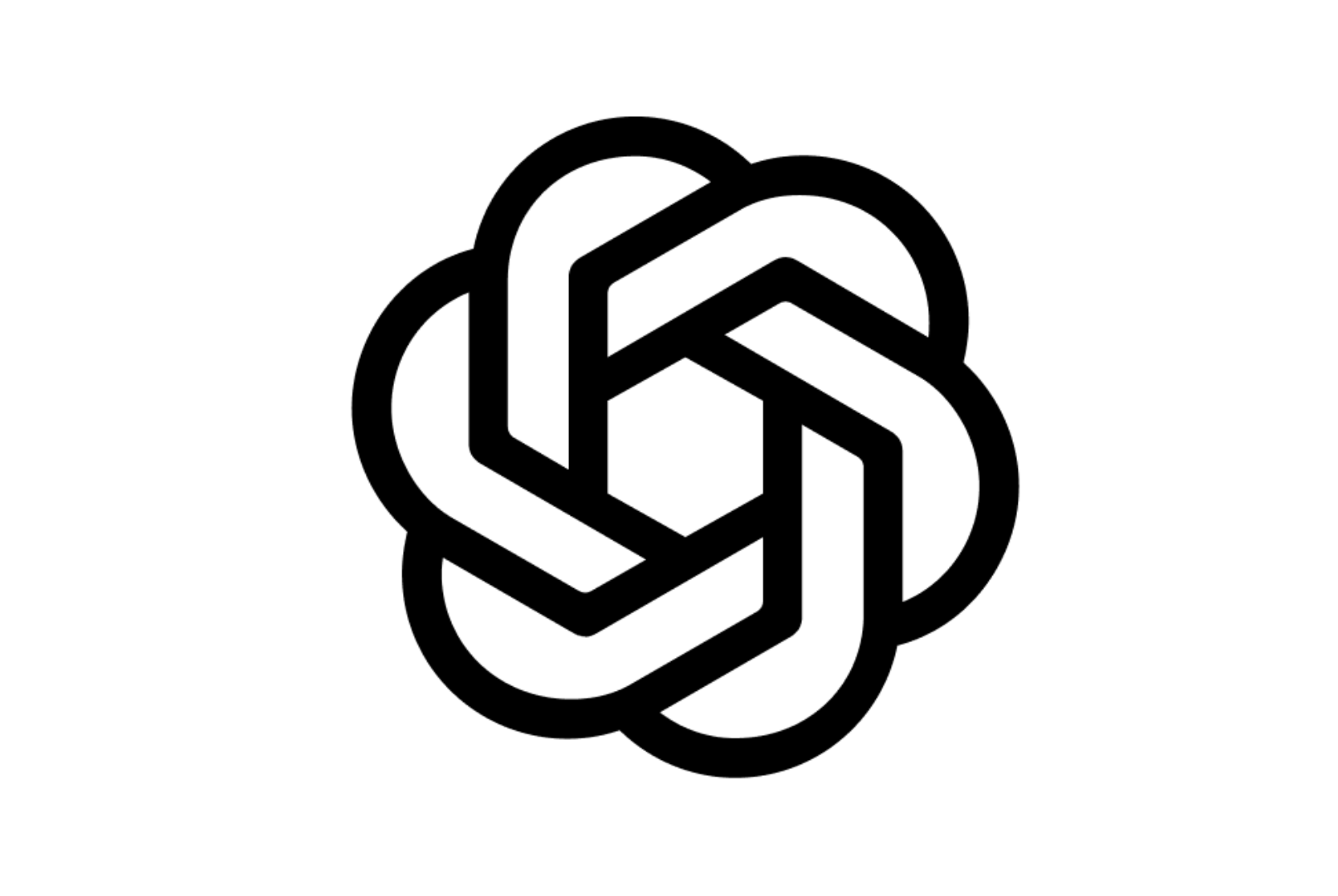
OpenAI o3
o3 is OpenAI's next-generation language model, representing a significant leap in performance, reasoning ability, and efficiency. Positioned between GPT-4 and GPT-4o in terms of evolution, o3 is engineered for advanced language understanding, content generation, multilingual communication, and code-related tasks—while maintaining faster speeds and lower latency than earlier models. As part of OpenAI’s GPT-4 Turbo family, o3 delivers high-quality outputs at scale, supporting both chat and completion endpoints. It’s currently used in various commercial and developer-facing tools for streamlined and intelligent interactions.


OpenAI o3
o3 is OpenAI's next-generation language model, representing a significant leap in performance, reasoning ability, and efficiency. Positioned between GPT-4 and GPT-4o in terms of evolution, o3 is engineered for advanced language understanding, content generation, multilingual communication, and code-related tasks—while maintaining faster speeds and lower latency than earlier models. As part of OpenAI’s GPT-4 Turbo family, o3 delivers high-quality outputs at scale, supporting both chat and completion endpoints. It’s currently used in various commercial and developer-facing tools for streamlined and intelligent interactions.


OpenAI o3
o3 is OpenAI's next-generation language model, representing a significant leap in performance, reasoning ability, and efficiency. Positioned between GPT-4 and GPT-4o in terms of evolution, o3 is engineered for advanced language understanding, content generation, multilingual communication, and code-related tasks—while maintaining faster speeds and lower latency than earlier models. As part of OpenAI’s GPT-4 Turbo family, o3 delivers high-quality outputs at scale, supporting both chat and completion endpoints. It’s currently used in various commercial and developer-facing tools for streamlined and intelligent interactions.

GPT-4.1 Mini is a lightweight version of OpenAI’s advanced GPT-4.1 model, designed for efficiency, speed, and affordability without compromising much on performance. Tailored for developers and teams who need capable AI reasoning and natural language processing in smaller-scale or cost-sensitive applications, GPT-4.1 Mini brings the power of GPT-4.1 into a more accessible form factor. Perfect for chatbots, content suggestions, productivity tools, and streamlined AI experiences, this compact model still delivers impressive accuracy, fast responses, and a reliable understanding of nuanced prompts—all while using fewer resources.

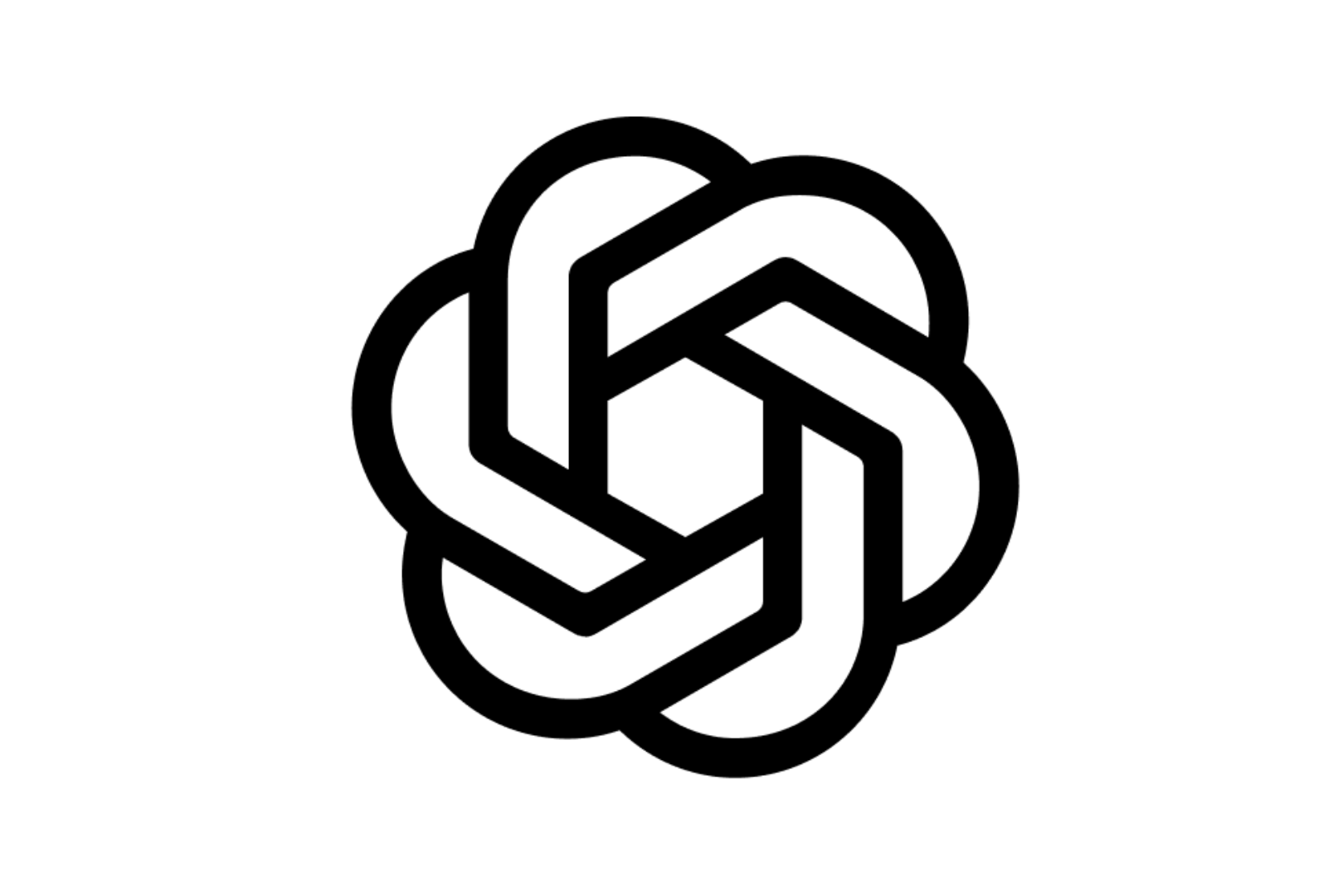
OpenAI GPT 4.1 min..
GPT-4.1 Mini is a lightweight version of OpenAI’s advanced GPT-4.1 model, designed for efficiency, speed, and affordability without compromising much on performance. Tailored for developers and teams who need capable AI reasoning and natural language processing in smaller-scale or cost-sensitive applications, GPT-4.1 Mini brings the power of GPT-4.1 into a more accessible form factor. Perfect for chatbots, content suggestions, productivity tools, and streamlined AI experiences, this compact model still delivers impressive accuracy, fast responses, and a reliable understanding of nuanced prompts—all while using fewer resources.


OpenAI GPT 4.1 min..
GPT-4.1 Mini is a lightweight version of OpenAI’s advanced GPT-4.1 model, designed for efficiency, speed, and affordability without compromising much on performance. Tailored for developers and teams who need capable AI reasoning and natural language processing in smaller-scale or cost-sensitive applications, GPT-4.1 Mini brings the power of GPT-4.1 into a more accessible form factor. Perfect for chatbots, content suggestions, productivity tools, and streamlined AI experiences, this compact model still delivers impressive accuracy, fast responses, and a reliable understanding of nuanced prompts—all while using fewer resources.

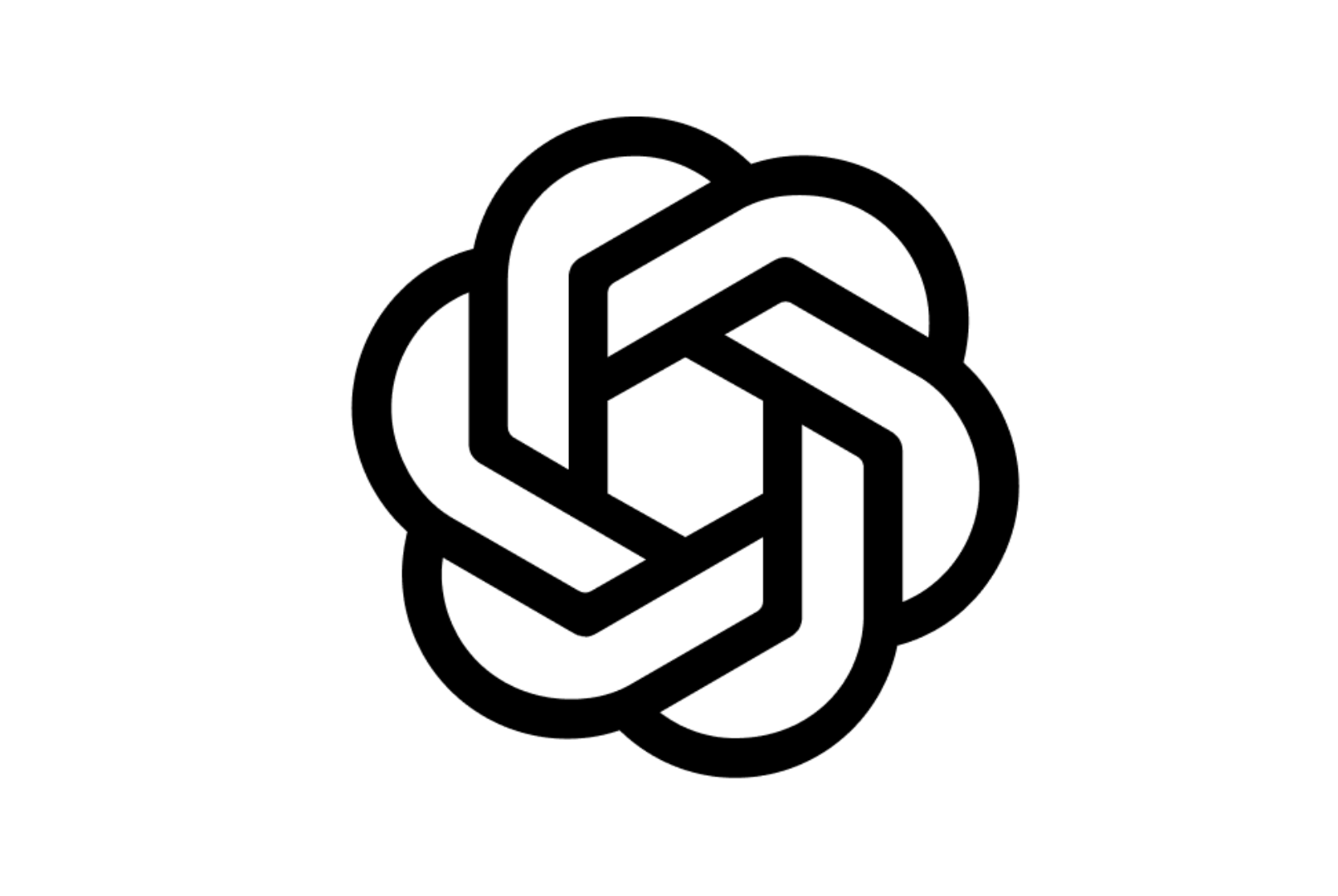
OpenAI GPT Image 1
GPT-Image-1 is OpenAI's state-of-the-art vision model designed to understand and interpret images with human-like perception. It enables developers and businesses to analyze, summarize, and extract detailed insights from images using natural language. Whether you're building AI agents, accessibility tools, or image-driven workflows, GPT-Image-1 brings powerful multimodal capabilities into your applications with impressive accuracy. Optimized for use via API, it can handle diverse image types—charts, screenshots, photographs, documents, and more—making it one of the most versatile models in OpenAI’s portfolio.


OpenAI GPT Image 1
GPT-Image-1 is OpenAI's state-of-the-art vision model designed to understand and interpret images with human-like perception. It enables developers and businesses to analyze, summarize, and extract detailed insights from images using natural language. Whether you're building AI agents, accessibility tools, or image-driven workflows, GPT-Image-1 brings powerful multimodal capabilities into your applications with impressive accuracy. Optimized for use via API, it can handle diverse image types—charts, screenshots, photographs, documents, and more—making it one of the most versatile models in OpenAI’s portfolio.


OpenAI GPT Image 1
GPT-Image-1 is OpenAI's state-of-the-art vision model designed to understand and interpret images with human-like perception. It enables developers and businesses to analyze, summarize, and extract detailed insights from images using natural language. Whether you're building AI agents, accessibility tools, or image-driven workflows, GPT-Image-1 brings powerful multimodal capabilities into your applications with impressive accuracy. Optimized for use via API, it can handle diverse image types—charts, screenshots, photographs, documents, and more—making it one of the most versatile models in OpenAI’s portfolio.

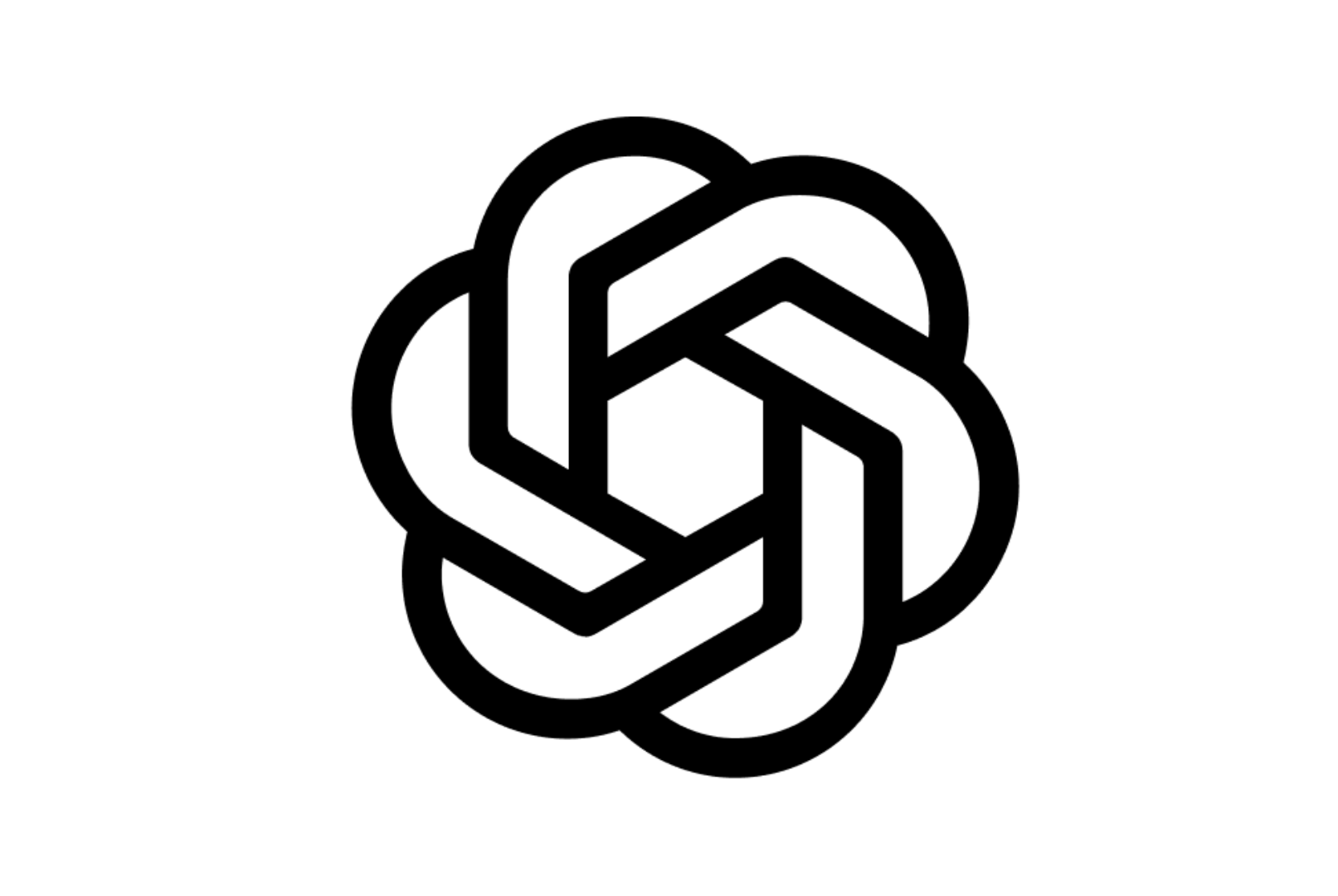
OpenAI Omni Modera..
omni-moderation-latest is OpenAI’s most advanced content moderation model, designed to detect and flag harmful, unsafe, or policy-violating content across a wide range of modalities and languages. Built on the GPT-4o architecture, it leverages multimodal understanding and multilingual capabilities to provide robust moderation for text, images, and audio inputs. This model is particularly effective in identifying nuanced and culturally specific toxic content, including implicit insults, sarcasm, and aggression that general-purpose systems might overlook.


OpenAI Omni Modera..
omni-moderation-latest is OpenAI’s most advanced content moderation model, designed to detect and flag harmful, unsafe, or policy-violating content across a wide range of modalities and languages. Built on the GPT-4o architecture, it leverages multimodal understanding and multilingual capabilities to provide robust moderation for text, images, and audio inputs. This model is particularly effective in identifying nuanced and culturally specific toxic content, including implicit insults, sarcasm, and aggression that general-purpose systems might overlook.


OpenAI Omni Modera..
omni-moderation-latest is OpenAI’s most advanced content moderation model, designed to detect and flag harmful, unsafe, or policy-violating content across a wide range of modalities and languages. Built on the GPT-4o architecture, it leverages multimodal understanding and multilingual capabilities to provide robust moderation for text, images, and audio inputs. This model is particularly effective in identifying nuanced and culturally specific toxic content, including implicit insults, sarcasm, and aggression that general-purpose systems might overlook.
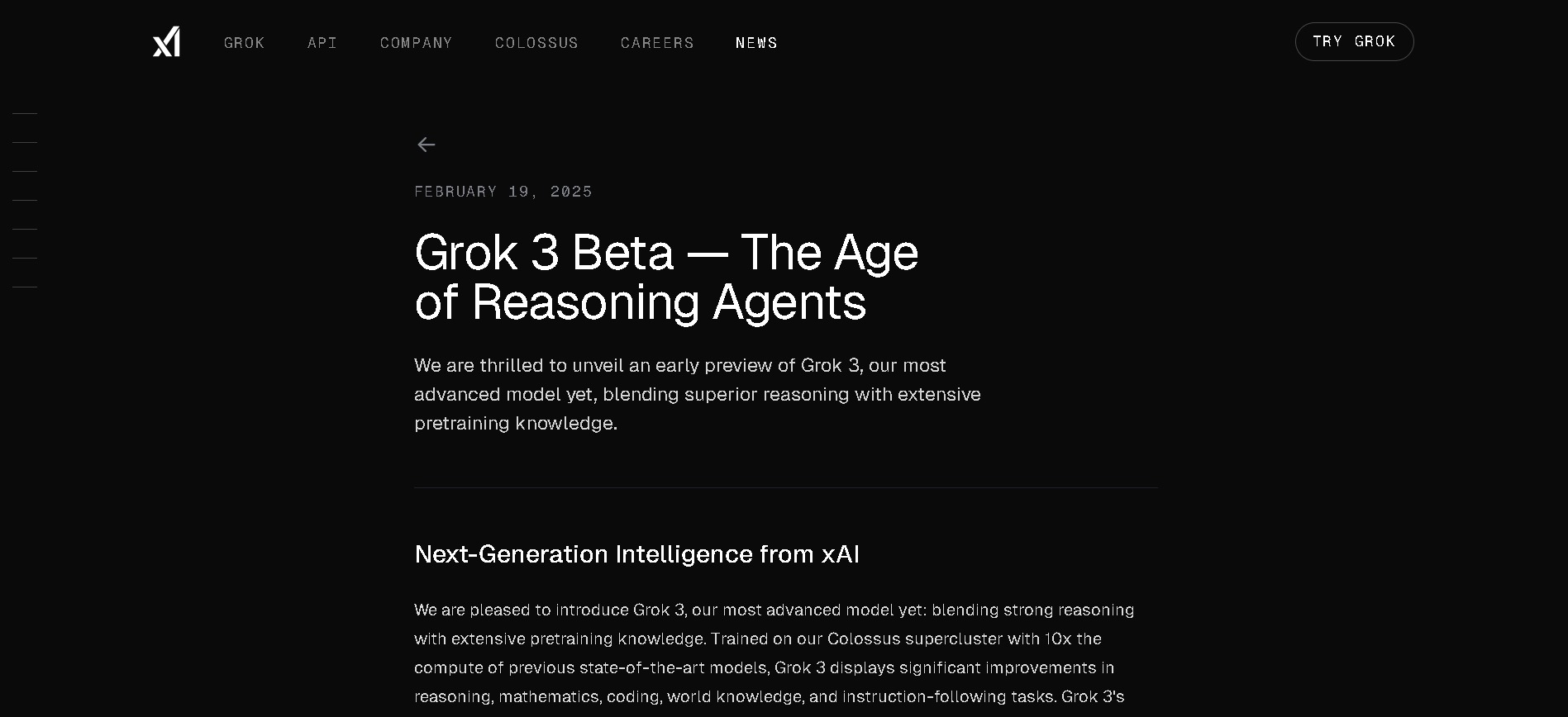

Grok 3
Grok 3 is the latest flagship chatbot by Elon Musk’s xAI, described as "the world’s smartest AI." It was trained on a massive 200,000‑GPU supercomputer and offers tenfold more computing power than Grok 2. Equipped with two reasoning modes—Think and Big Brain—and featuring DeepSearch (a contextual web-and-X research tool), Grok 3 excels in math, science, coding, and truth-seeking tasks—all while offering fast, lively conversational style.


Grok 3
Grok 3 is the latest flagship chatbot by Elon Musk’s xAI, described as "the world’s smartest AI." It was trained on a massive 200,000‑GPU supercomputer and offers tenfold more computing power than Grok 2. Equipped with two reasoning modes—Think and Big Brain—and featuring DeepSearch (a contextual web-and-X research tool), Grok 3 excels in math, science, coding, and truth-seeking tasks—all while offering fast, lively conversational style.


Grok 3
Grok 3 is the latest flagship chatbot by Elon Musk’s xAI, described as "the world’s smartest AI." It was trained on a massive 200,000‑GPU supercomputer and offers tenfold more computing power than Grok 2. Equipped with two reasoning modes—Think and Big Brain—and featuring DeepSearch (a contextual web-and-X research tool), Grok 3 excels in math, science, coding, and truth-seeking tasks—all while offering fast, lively conversational style.
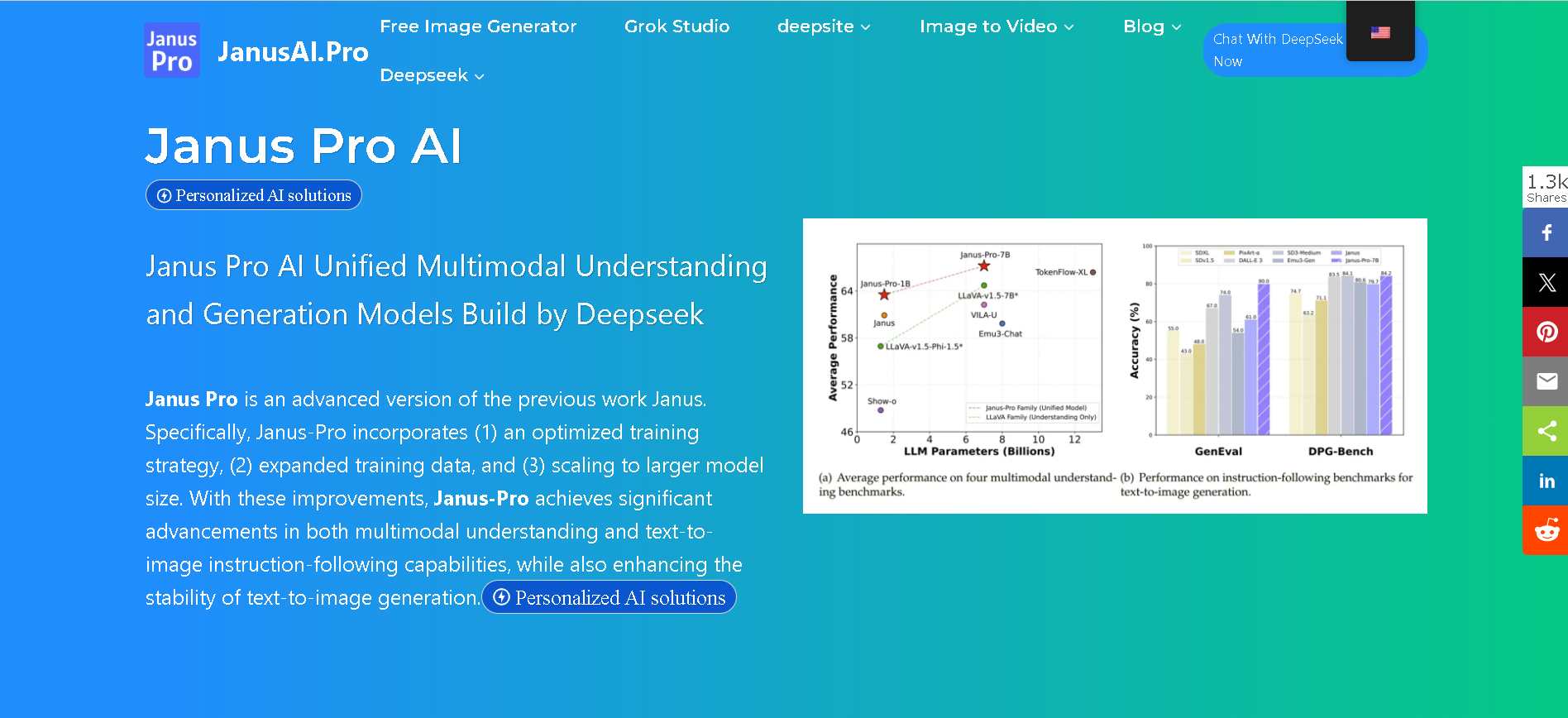

Janus-Pro-7B
anus Pro 7B is DeepSeek’s flagship open-source multimodal AI model, unifying vision understanding and text-to-image generation within a single transformer architecture. Built on DeepSeek‑LLM‑7B, it uses a decoupled visual encoding approach paired with SigLIP‑L and VQ tokenizer, delivering superior visual fidelity, prompt alignment, and stability across tasks—benchmarked ahead of OpenAI’s DALL‑E 3 and Stable Diffusion variants.


Janus-Pro-7B
anus Pro 7B is DeepSeek’s flagship open-source multimodal AI model, unifying vision understanding and text-to-image generation within a single transformer architecture. Built on DeepSeek‑LLM‑7B, it uses a decoupled visual encoding approach paired with SigLIP‑L and VQ tokenizer, delivering superior visual fidelity, prompt alignment, and stability across tasks—benchmarked ahead of OpenAI’s DALL‑E 3 and Stable Diffusion variants.


Janus-Pro-7B
anus Pro 7B is DeepSeek’s flagship open-source multimodal AI model, unifying vision understanding and text-to-image generation within a single transformer architecture. Built on DeepSeek‑LLM‑7B, it uses a decoupled visual encoding approach paired with SigLIP‑L and VQ tokenizer, delivering superior visual fidelity, prompt alignment, and stability across tasks—benchmarked ahead of OpenAI’s DALL‑E 3 and Stable Diffusion variants.
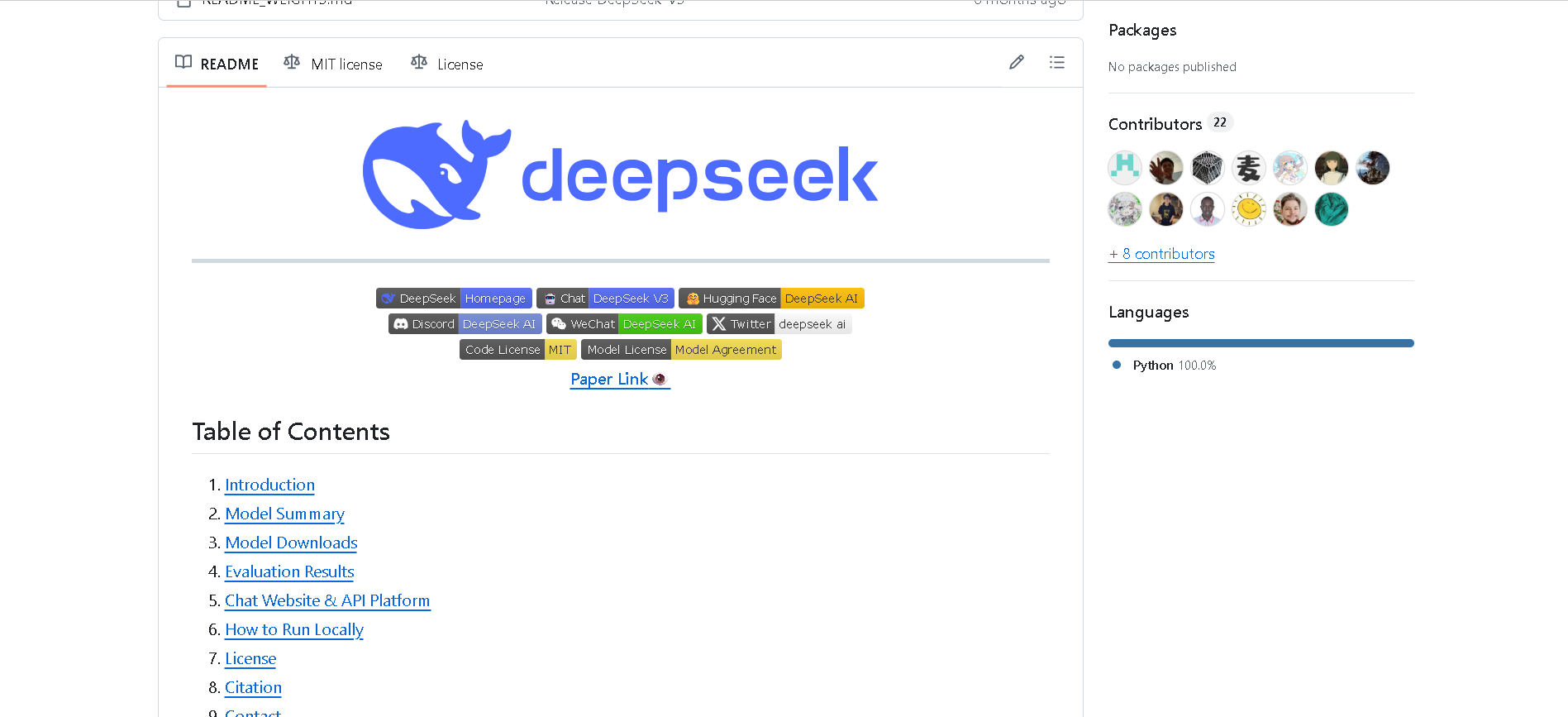

DeepSeek-V3
DeepSeek V3 is the latest flagship Mixture‑of‑Experts (MoE) open‑source AI model from DeepSeek. It features 671 billion total parameters (with ~37 billion activated per token), supports up to 128K context length, and excels across reasoning, code generation, language, and multimodal tasks. On standard benchmarks, it rivals or exceeds proprietary models—including GPT‑4o and Claude 3.5—as a high-performance, cost-efficient alternative.


DeepSeek-V3
DeepSeek V3 is the latest flagship Mixture‑of‑Experts (MoE) open‑source AI model from DeepSeek. It features 671 billion total parameters (with ~37 billion activated per token), supports up to 128K context length, and excels across reasoning, code generation, language, and multimodal tasks. On standard benchmarks, it rivals or exceeds proprietary models—including GPT‑4o and Claude 3.5—as a high-performance, cost-efficient alternative.


DeepSeek-V3
DeepSeek V3 is the latest flagship Mixture‑of‑Experts (MoE) open‑source AI model from DeepSeek. It features 671 billion total parameters (with ~37 billion activated per token), supports up to 128K context length, and excels across reasoning, code generation, language, and multimodal tasks. On standard benchmarks, it rivals or exceeds proprietary models—including GPT‑4o and Claude 3.5—as a high-performance, cost-efficient alternative.
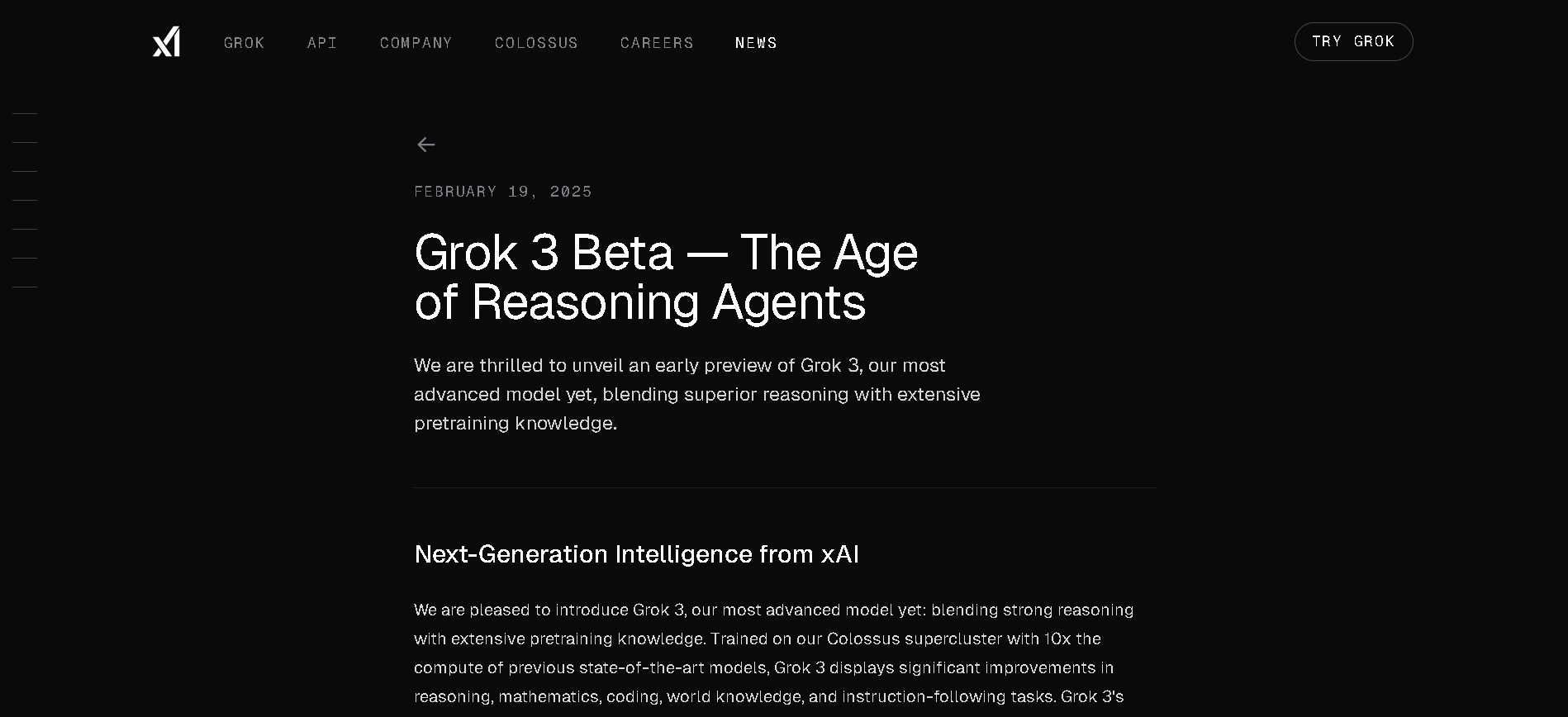
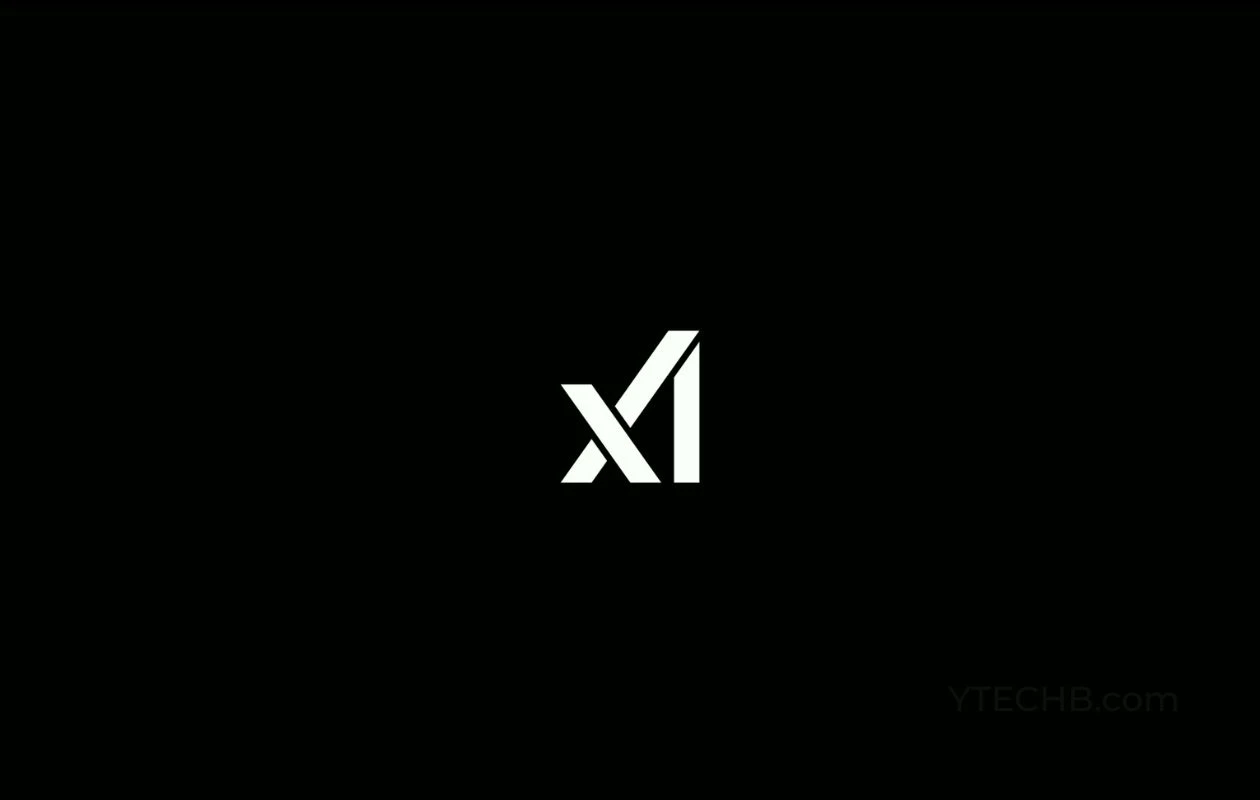
Grok 3 Latest
Grok 3 is xAI’s newest flagship AI chatbot, released on February 17, 2025, running on the massive Colossus supercluster (~200,000 GPUs). It offers elite-level reasoning, chain-of-thought transparency (“Think” mode), advanced “Big Brain” deeper reasoning, multimodal support (text, images), and integrated real-time DeepSearch—positioning it as a top-tier competitor to GPT‑4o, Gemini, Claude, and DeepSeek V3 on benchmarks.


Grok 3 Latest
Grok 3 is xAI’s newest flagship AI chatbot, released on February 17, 2025, running on the massive Colossus supercluster (~200,000 GPUs). It offers elite-level reasoning, chain-of-thought transparency (“Think” mode), advanced “Big Brain” deeper reasoning, multimodal support (text, images), and integrated real-time DeepSearch—positioning it as a top-tier competitor to GPT‑4o, Gemini, Claude, and DeepSeek V3 on benchmarks.


Grok 3 Latest
Grok 3 is xAI’s newest flagship AI chatbot, released on February 17, 2025, running on the massive Colossus supercluster (~200,000 GPUs). It offers elite-level reasoning, chain-of-thought transparency (“Think” mode), advanced “Big Brain” deeper reasoning, multimodal support (text, images), and integrated real-time DeepSearch—positioning it as a top-tier competitor to GPT‑4o, Gemini, Claude, and DeepSeek V3 on benchmarks.
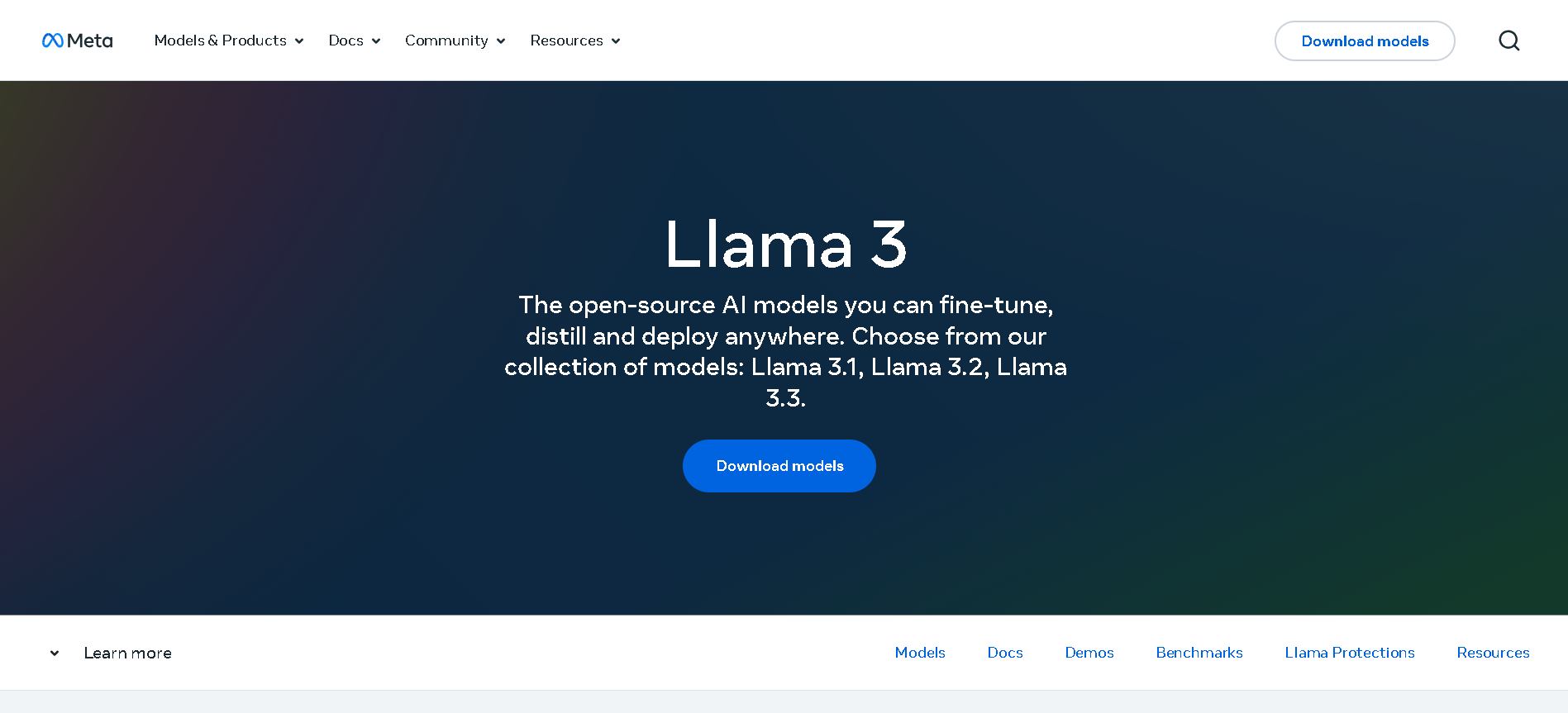

Meta Llama 3.2
Llama 3.2 is Meta’s multimodal and lightweight update to its Llama 3 line, released on September 25, 2024. The family includes 1B and 3B text-only models optimized for edge devices, as well as 11B and 90B Vision models capable of image understanding. It offers a 128K-token context window, Grouped-Query Attention for efficient inference, and opens up on-device, private AI with strong multilingual (e.g. Hindi, Spanish) support.


Meta Llama 3.2
Llama 3.2 is Meta’s multimodal and lightweight update to its Llama 3 line, released on September 25, 2024. The family includes 1B and 3B text-only models optimized for edge devices, as well as 11B and 90B Vision models capable of image understanding. It offers a 128K-token context window, Grouped-Query Attention for efficient inference, and opens up on-device, private AI with strong multilingual (e.g. Hindi, Spanish) support.


Meta Llama 3.2
Llama 3.2 is Meta’s multimodal and lightweight update to its Llama 3 line, released on September 25, 2024. The family includes 1B and 3B text-only models optimized for edge devices, as well as 11B and 90B Vision models capable of image understanding. It offers a 128K-token context window, Grouped-Query Attention for efficient inference, and opens up on-device, private AI with strong multilingual (e.g. Hindi, Spanish) support.
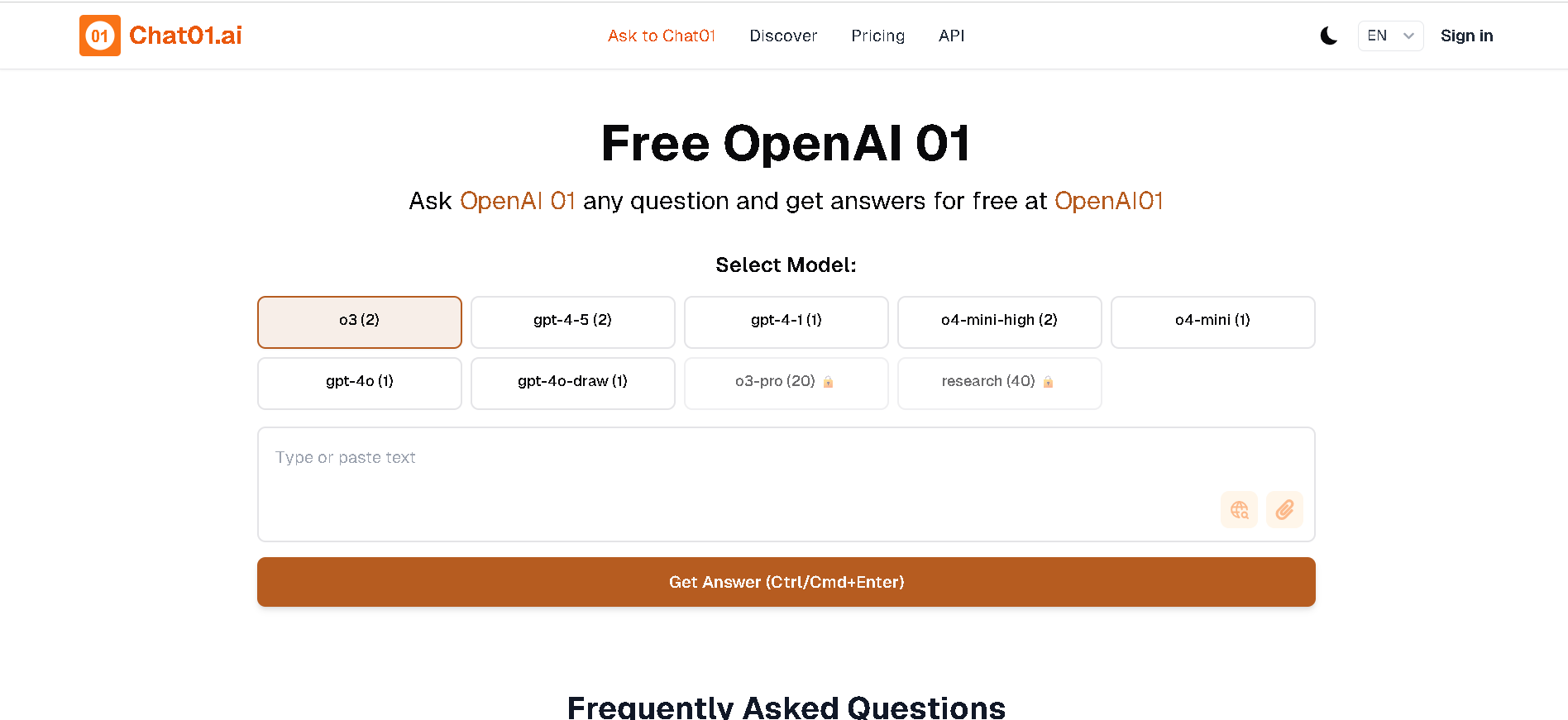
Chat 01 AI
Chat01.ai is a platform that offers free and unlimited chat with OpenAI 01, a new series of AI models. These models are specifically designed for complex reasoning and problem-solving in areas such as science, coding, and math, by employing a "think more before responding" approach, trying different strategies, and recognizing mistakes.

Chat 01 AI
Chat01.ai is a platform that offers free and unlimited chat with OpenAI 01, a new series of AI models. These models are specifically designed for complex reasoning and problem-solving in areas such as science, coding, and math, by employing a "think more before responding" approach, trying different strategies, and recognizing mistakes.

Chat 01 AI
Chat01.ai is a platform that offers free and unlimited chat with OpenAI 01, a new series of AI models. These models are specifically designed for complex reasoning and problem-solving in areas such as science, coding, and math, by employing a "think more before responding" approach, trying different strategies, and recognizing mistakes.
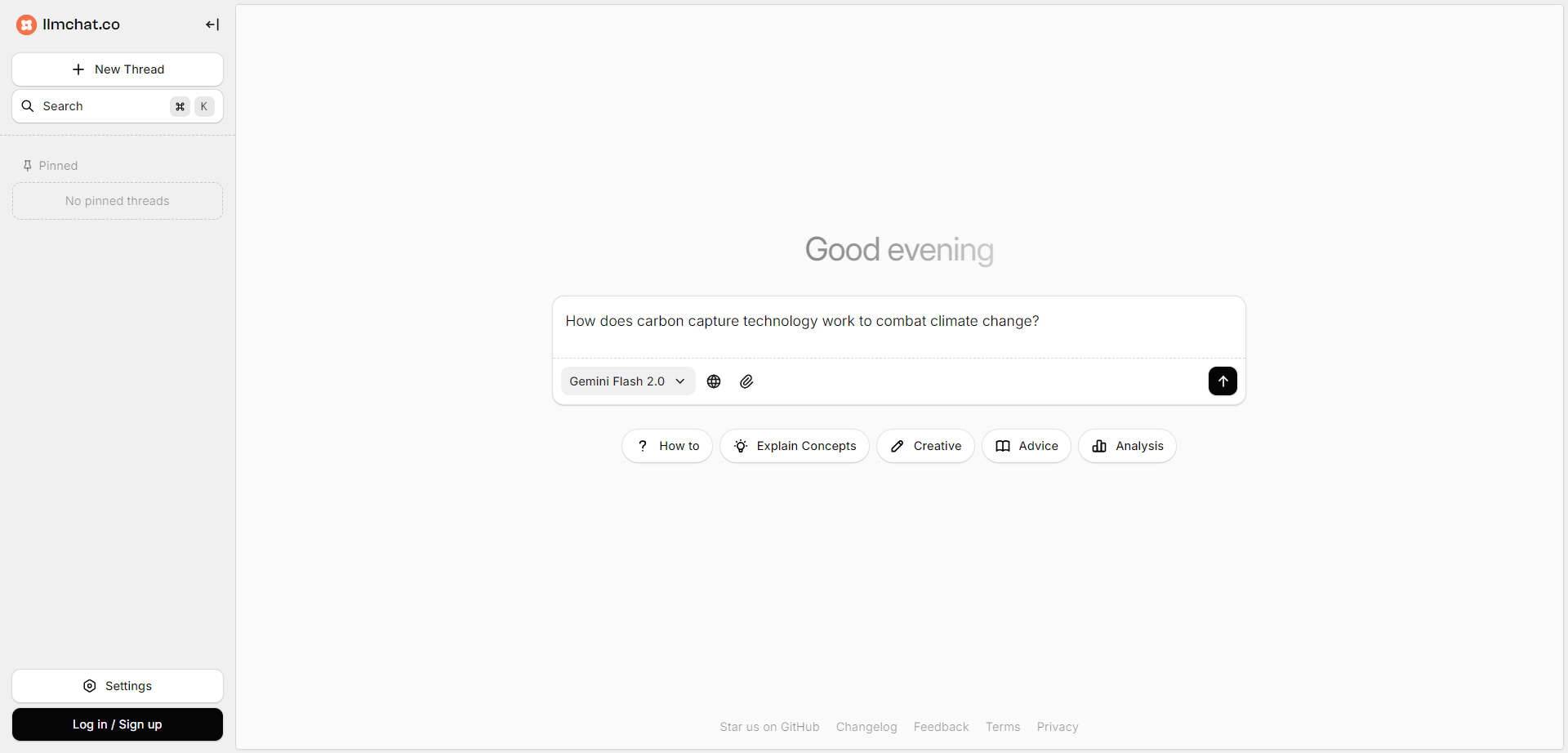
LLM Chat
LLMChat is a privacy-focused, open-source AI chatbot platform designed for advanced research, agentic workflows, and seamless interaction with multiple large language models (LLMs). It offers users a minimalistic and intuitive interface enabling deep exploration of complex topics with modes like Deep Research and Pro Search, which incorporates real-time web integration for current data. The platform emphasizes user privacy by storing all chat history locally in the browser, ensuring conversations never leave the device. LLMChat supports many popular LLM providers such as OpenAI, Anthropic, Google, and more, allowing users to customize AI assistants with personalized instructions and knowledge bases for a wide variety of applications ranging from research to content generation and coding assistance.

LLM Chat
LLMChat is a privacy-focused, open-source AI chatbot platform designed for advanced research, agentic workflows, and seamless interaction with multiple large language models (LLMs). It offers users a minimalistic and intuitive interface enabling deep exploration of complex topics with modes like Deep Research and Pro Search, which incorporates real-time web integration for current data. The platform emphasizes user privacy by storing all chat history locally in the browser, ensuring conversations never leave the device. LLMChat supports many popular LLM providers such as OpenAI, Anthropic, Google, and more, allowing users to customize AI assistants with personalized instructions and knowledge bases for a wide variety of applications ranging from research to content generation and coding assistance.

LLM Chat
LLMChat is a privacy-focused, open-source AI chatbot platform designed for advanced research, agentic workflows, and seamless interaction with multiple large language models (LLMs). It offers users a minimalistic and intuitive interface enabling deep exploration of complex topics with modes like Deep Research and Pro Search, which incorporates real-time web integration for current data. The platform emphasizes user privacy by storing all chat history locally in the browser, ensuring conversations never leave the device. LLMChat supports many popular LLM providers such as OpenAI, Anthropic, Google, and more, allowing users to customize AI assistants with personalized instructions and knowledge bases for a wide variety of applications ranging from research to content generation and coding assistance.
Editorial Note
This page was researched and written by the ATB Editorial Team. Our team researches each AI tool by reviewing its official website, testing features, exploring real use cases, and considering user feedback. Every page is fact-checked and regularly updated to ensure the information stays accurate, neutral, and useful for our readers.
If you have any suggestions or questions, email us at hello@aitoolbook.ai
